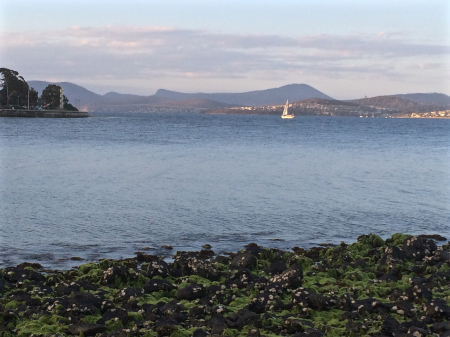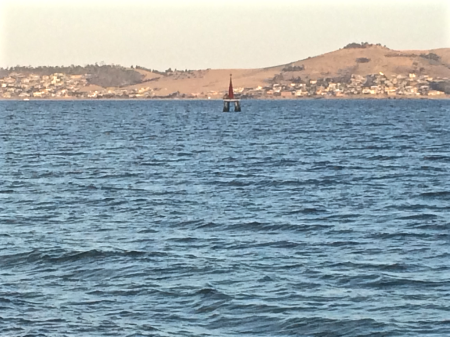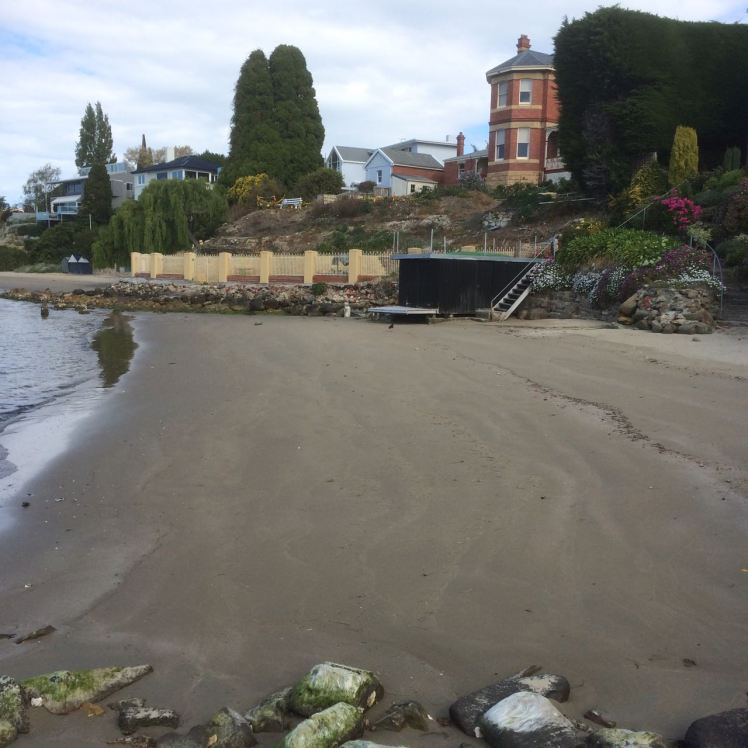D’Entrecasteaux Channel: Kettering and Little Oyster Cove
Back in the Land of the Nuenonne
When we were preparing the house for sale earlier this year, we moved on board Samos, thinking we’d be at Kettering in Little Oyster Cove for several months. We planned to spend that time cruising the D’Entrecasteaux and Norfolk Bay but within a matter of days our lovely mountain home had found itself new owners and we barely had time to tackle our list of boat tasks before we were home again packing boxes.
Travelling in a small van as we did last year and cruising in a small yacht proves that truism of life being richer as possessions get exfoliated and waste gets reduced. But moving house is not good for the environment. You may give the Red Cross Shop your library and St Vinnies the clothes off your back, but the recycling and refuse bins fill exponentially and zero waste targets shatter alarmingly.
We went down to the marina on a sunny day and stepping on board Samos I noticed a swirling black ring beneath the water, just behind the yacht’s transom, and an overlapping circle of silver, moving that little bit quicker. A cormorant was hunting a school of bait fish that panicked into a leaping confusion as the bird downed its catch while rising to the surface.
Relaxing beneath the boom tent with a g&t on a blue day before summer’s lease expired, we watched a puffer fish slowly inspecting the seaweed attached to the floating marina and each time the black swans came visiting the dogs were transfixed.

Life in the marina spools out slowly. Those of us working on our boats shared tools, suggestions, advice and meals while in the background yachts slipped quietly through the marina, the Bruny Island ferries came and went where once the Nuenonne paddled their bark canoes, where Bruni D’Entrecasteaux sailed – sealers and whalers too – and the constant sound on the boat, in the quieter moments and most noticeably in the silence of the night, was the idle clicking of tiny beings feasting on the hull.

The super blue blood moon rose over Bruny Island, the Channel and the yachts while the dark hills slept and we looked up at the moon and also down at its reflection, snagged in the riggings of yachts impressed by its light on the water.

There have been other times at the marina when nature has gifted us a surprise or two. We’ve been astonished by flocks of about 200 black cockatoos swirling around the pine trees. We’ve stopped to watch the parade of crabs along the marina shallows. Kayaking this cove I once followed a ray as it made its way around the north east corner. I like rays. The ones I have encountered all seem capable and full of purpose.
We were at the marina long enough to enjoy several coffees and breakfasts at the café beside the ferry terminal with its views of Bruny Island and to enjoy the pub up the hill. Really, the marina is for me the heart of Kettering and Kettering the link between mainland Tasmania and Bruny Island. For a small place it’s pretty amazing that along with the pub it has three cafes as well as artistic credentials and links, some believe to planets elsewhere. This extra terrestrial history inspired the Kettering Incident.
We walked the short track through coastal woodland around to Trial Bay, lazed at Kettering Point and in the evening took the short walking track below the cricket oval on the northern side of the cove. There are houses on the hills which were once entirely forested, that therefore drew timber cutters in Kettering’s early days, and tucked away in the valleys behind the village are farms producing organic produce for which Tasmania is rightly famous.
Marinas can be tough on the watery world but this one has achieved some recognition for its environmental efforts and living on board proved so enjoyable that we agreed that while small is beautiful if we want to live on board all summer long then a yacht a little bigger would be more comfortable. And so our lovely yacht Samos is on the market and a new adventure is about to begin.



























